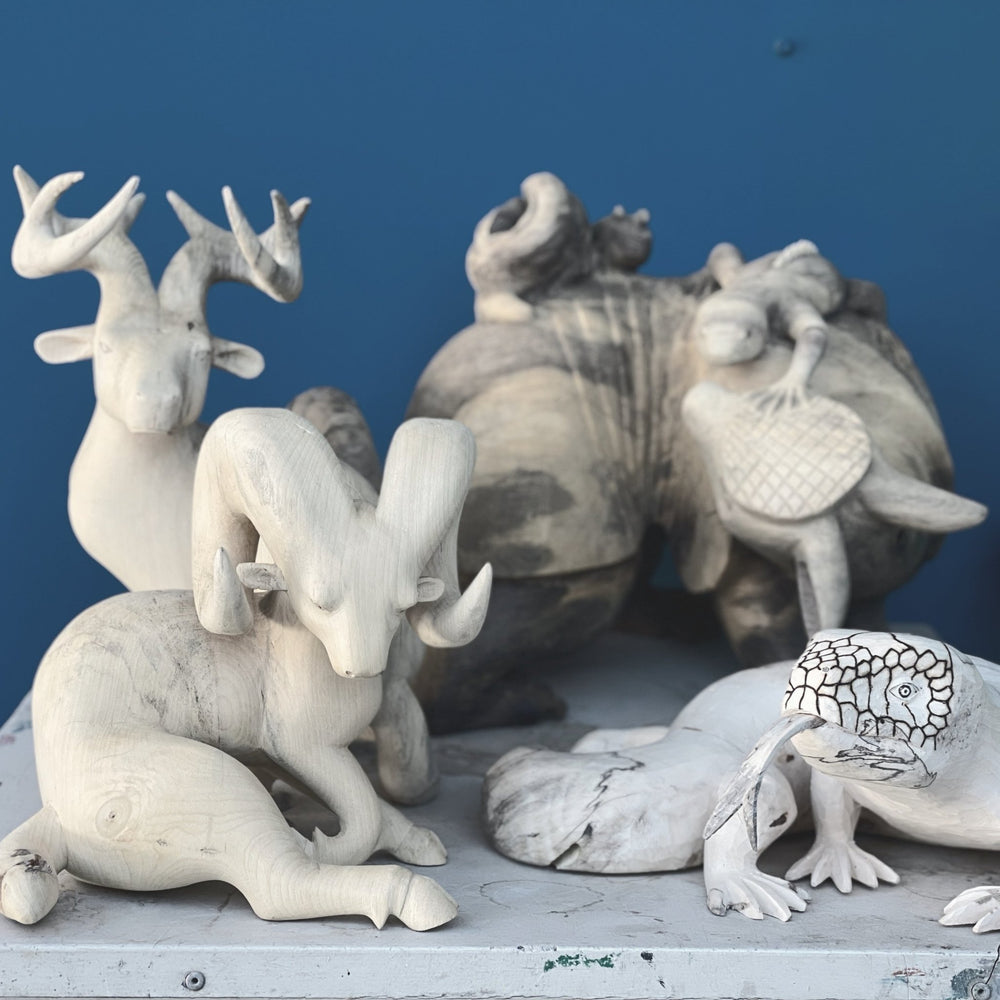The process of elaboration of the Oaxacan Alebrije

In this popular art, the raw material is copalillo wood. Copalillo and tzompantle were used for simple jobs, since they are both soft and white woods; and for special works white cedar or eagle wood was used.
The first thing used to be to find a good tree in the surroundings of Monte Albán and San Pablo Cuatro Venados, find a good piece of wood, and work it. Before, the wood used to be collected, however this is no longer possible, due to the scarcity of it and the care of the ecological reserve of the Monte Albán polygon. For this reason, the wood is bought from native merchants in the region who deliver to homes, coming from San Pablo Cuatro Venados or the Etla district and other regions of Oaxaca.
The wood is peeled and worked when it is green and moist so that it does not split or splinter when carved.
The tool is a sharp machete to cut the wood, the outline and the last of the figure; a set of very sharp knives, gurbia, chisels or chisels and brace, for carving, and sandpaper for fine finishing; as well as nails and a hammer for joining some parts.
Once the figures are made, they are left to dry for several days, to prevent them from splitting or cracking, and they are cured so that they do not chip. The pieces made of simple woods, such as copalillo or tzompantle, which could split if left natural, are currently painted with acrylic paint, some pigments and a brush. Years ago, there were those who used only natural dyes that were obtained from the bark of trees, from the earth, aniline powder or even cochineal.
The elaboration and finishing of each piece can take from a few days to weeks, depending on the complexity of the carving, the fine finish, curing and painting decoration.

When starting the coloring of animal figures that attracts so much attention, the design of the decoration is not previously drawn, but until the moment of doing it, the artist lets his imagination run wild, and must achieve the necessary mastery of proportion to adjust the drawings. to the space it must cover and the complex shapes and curves of the carving.
The pieces are very varied in shapes, originality and sizes, which is why they have been worthy of being exhibited and admired for their impeccable presentation in museums and galleries around the world.
This art tries to rescue the culture of its people: each figure has a meaning linked to its ancestors.
For example, the elaboration of a jaguar is inspired by Monte Albán (known as Cerro de Jaguares), this figure means bravery and pre-Hispanic history, rescuing the symbology of a great culture.
Likewise, it represents the image of the nahual (healer or shaman of pre-Hispanic times), that is, the person who transforms into an animal. According to Mesoamerican cultures, each human being is born with the spirit or soul of an animal, and according to the date of birth and similar physiognomic characteristics, the animal that corresponds to each individual is determined, thus forming a duality.


